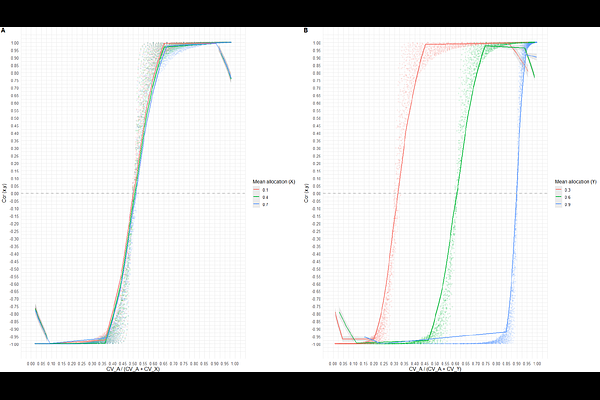Mechanisms of phenotypic trade-offs in the resource acquisition-allocation Y-model

Mechanisms of phenotypic trade-offs in the resource acquisition-allocation Y-model
Sanghvi, K.; Gascoigne, S. J. L.; Sepil, I.
AbstractPhenotypic trade-offs, predicted to occur due to resource constraints, are not commonly observed. This discrepancy is explained by the seminal Y-model, where greater variation in resource acquisition (CV_A) than in allocation (CV_X) masks trade-offs. However, the Y-model is a heuristic rather than a quantitative tool with testable predictions. Additionally, which parameters modulate phenotypic trade-offs in the Y-model and their mechanism, remains unclear. Here, we simulate different parameters of the Y-model to understand their influence. We find that \'CV_A/(CV_A+CV_X)\' accurately predicts the direction and strength of phenotypic correlations. However, contrary to common misinterpretations, the mean resource acquired by a population does not influence trade-offs; instead, the mean allocation strategy of a population does. Importantly, within-individual dependence of allocation on acquisition exacerbates the modulating influence of mean allocation. This causes greater sensitivity of phenotypic correlations to changes in CV_A or CV_X compared to independence of allocation and acquisition. We generate novel, testable hypotheses about trade-offs in the context of dietary restriction, plasticity, polymorphism, and pace-of-life. Furthermore, we validate our model against empirical data to demonstrate its utility. By systematically partitioning the influence of means, variances, and covariance, in the acquisition-allocation Y-model, we provide a simple, generalisable, quantitative synthesis for understanding phenotypic trade-offs.